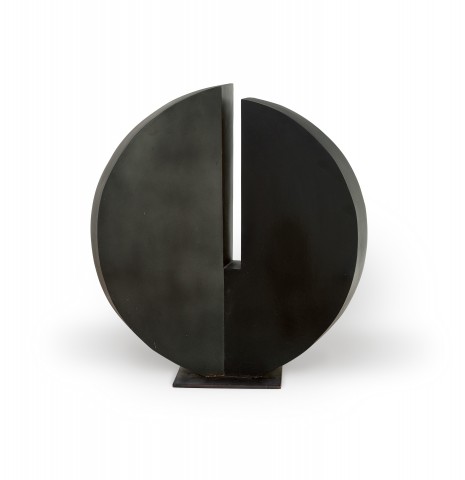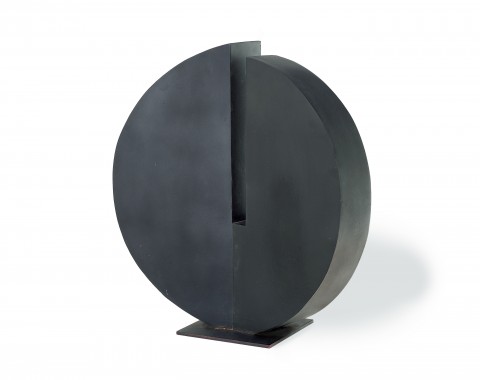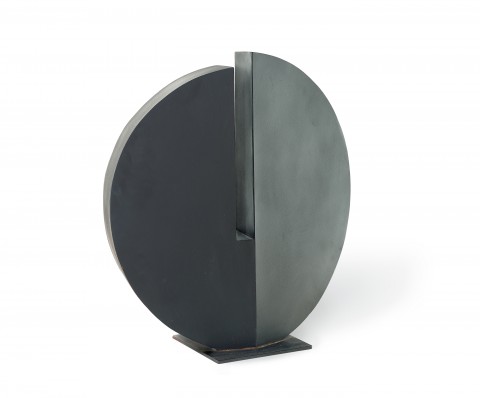BLACK SUN, 1974
INGE KING
enamel paint on steel
62.0 x 60.0 x 22.0 cm
Australian Galleries, Melbourne
Private collection, Sydney
Sotheby's, Sydney, 31 August 2010, lot 9
John Barnes, Melbourne, acquired from the above
The Estate of John Barnes, Melbourne
The Kings, City of Mildura Arts Centre, Victoria, September – October 1975; and touring to McClelland Gallery, Langwarrin, Geelong Art Gallery, Victoria, Benalla Art Gallery, Victoria, and Sale Regional Art Centre, Victoria, throughout 1975 – 76, cat. 43 (another example)
Inge King: Sculptures, Realities Gallery, Melbourne, 24 March – 21 April 1977, cat, 17 (another example)
Spring Exhibition 1979, Joseph Brown Gallery, Melbourne, 17 – 30 October 1979, cat. 176 (illus. in exhibition catalogue, another example)
Inge King Sculpture 1945 – 1982: A Survey, University Gallery, University of Melbourne, Victoria, 14 September – 22 October 1982, cat. 10 (another example)
Inge King: Small Sculptures, Bendigo Art Gallery, Victoria, 6 September – 8 October 1995, cat. 17 (another example)
Sculpture: The Joseph Brown Collection, McClelland Sculpture Park and Gallery, Langwarrin, 1 July - 9 September 2001 (another example)
Inge King: Small Sculptures, McClelland Sculpture Park and Gallery, Langwarrin, 8 August – 26 September 2004, cat. 33 (illus. in exhibition catalogue, another example)
Inge King: Constellation, National Gallery of Victoria, Melbourne, 1 May – 31 August 2014 (another example)
Hard Edge: Abstract Sculpture 1960s-70s, The Ian Potter Centre: NGV Australia, Melbourne, 13 February – July 2016 (another example)
Zimmer, J., Inge King Sculpture 1945 – 1982: A Survey, University of Melbourne, Victoria, 1982, pp. 16, 21
Thomas, D., Inge King: Small Sculptures, Bendigo Art Gallery, Victoria, 1995, pp. 7, 25, 30 (illus., another example)
Trimble, J., Inge King: Sculptor, Craftsman House, Sydney, 1996, pp. 106, 109, 135, 190, 200
Lindsay, F. (ed.), The Joseph Brown Collection at NGV Australia, National Gallery of Victoria, Melbourne, 2004, p. 166 (illus., another example)
Steele, P., The Whispering Gallery: Art into Poetry, Macmillan Art Publishing, Melbourne, 2006, p. 22 (illus., another example)
Grishin, S., The Art of Inge King Sculptor, Macmillan Art Publishing, Melbourne, 2014, pp. 147 – 148, 322 (illus., another example), 369
Hurlston, D. and Eckett, J., Inge King: Constellation, National Gallery of Victoria, Melbourne, 2014, pp. 18, 66 (illus., another example), 130
Edwards, R. and Rozentals, B., 'Hard Edge: Abstract Sculpture 1960s–70s', NGV, 12 February 2016, https://www.ngv.vic.gov.au/essay/hard-edge-abstract-sculpture-1960s-70s/ (accessed August 2024)
Other editions of this sculpture are held in the collections of the National Gallery of Victoria, Melbourne, and Deakin University Museum of Art, Melbourne
Black Sun, 1975, painted mild steel, 239.0 x 208.0 x 72.0 cm, in the collection of the Mildura Arts Centre, Victoria
Black Sun II, 1975, painted mild steel, 239.0 x 208.0 x 72.0 cm, in the collection of the Australian National University, Canberra
Black Sun, 1974 is one of Inge King’s most significant sculptures of the 1970s, encapsulating the command of both material and form that saw her become one of Australia’s most highly regarded modernist sculptors. Signalling a radical departure from the artist’s expressive and heavily textured work of the 1960s, the precise, streamlined curves of Black Sun and works such as Forward Surge, 1976 (commissioned for the Arts Centre, Melbourne) emerged after a three-month trip to Europe and the United States with husband and fellow artist Grahame King in 1969 – 70.1 King was influenced by the scale and ambition (but not style) of the large Minimalist sculpture she saw in public spaces during their travels,2 and on her return, as her reputation grew, she was correspondingly able to realise her own work on a large-scale for the first time. King’s 1973 exhibition at Melbourne’s Powell Street Gallery, Works for Monumental Sculptures, was one of the first public declarations of the importance of the maquette to both her practice and artistic vision, as the maquettes were not for sale, but were instead displayed to invite public commissions.
Lot 22 Inge King (1).jpeg
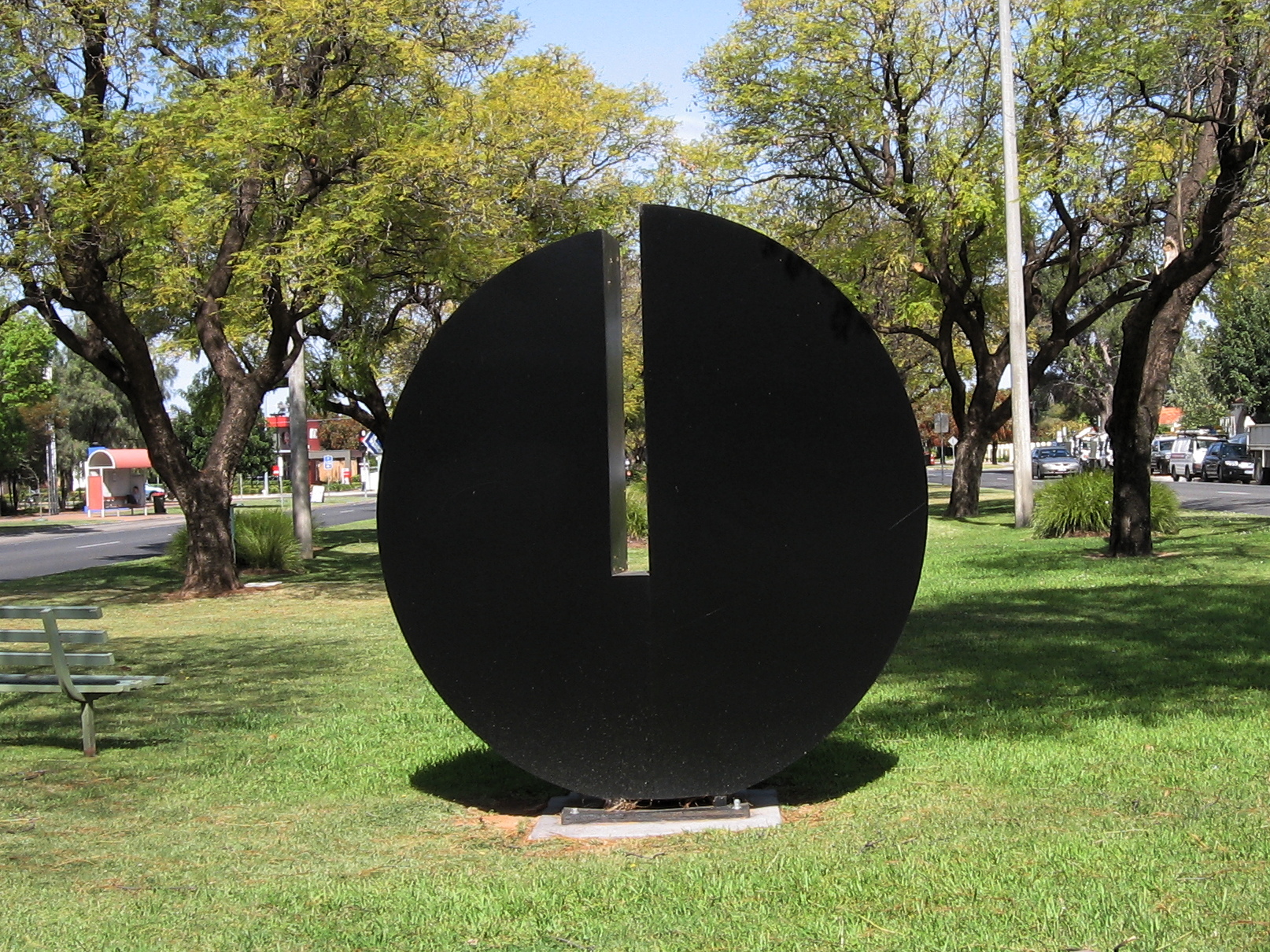
Inge King
Black Sun, 1974
painted mild steel, 239.0 x 208.0 x 72.0 cm
photographer unknown
Mildura Arts Centre, Victoria
Initially conceived as a maquette for a competition in Western Australia, Black Sun was of such importance to King that she withdrew the maquette from the acquisitive prize that she had entered so that she could keep the piece and enlarge it for a ‘different occasion’.3 The result was the monumental Black Sun, 1975, which was exhibited in the Sixth Mildura Sculpture Triennial at Mildura Arts Centre in 1975 and subsequently awarded the acquisitive prize. A second large-scale version, Black Sun II, 1975 was acquired by the Australian National University, Canberra. As artist James Gleeson rightly noted in an interview with King five years after the work’s creation, ‘In a way … Black Sun’s almost become like a signature tune for Inge King. Everyone associates with it.’4
Inge King Forward Surge, 1976
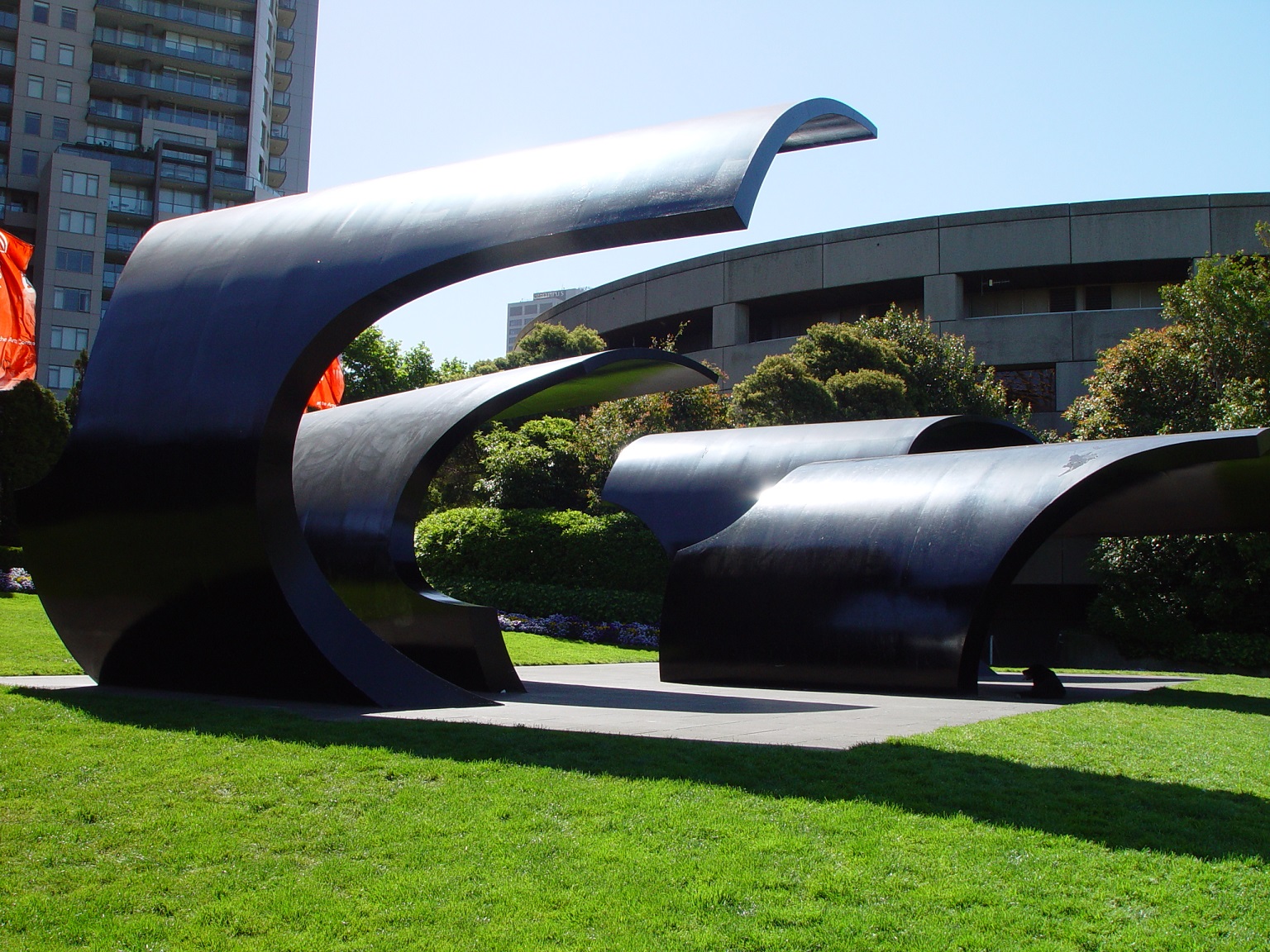
|
Inge King
Forward Surge, 1976
painted mild steel, 516.0 x 1514.0 x 1368.0 cm
photographer unknown
Arts Centre, Melbourne
|
The success of Black Sun lies in its deceptively simple form – two semicircular shapes set at a slight angle to each other, intersected by a slit than runs vertically between the two. This simple device allows light to penetrate the work’s elegant and seemingly self-contained mass, creating a sense of physical engagement for the viewer as the play of light that penetrates the seam passes across the work’s surface at different times of the day. As art historian Jane Eckett has recognised, the three separate maquettes that King made prior to the final version (this work is the third, and the only realised in steel) attest to the thought behind the determination of the exact angle required to activate light and shadow5, almost as if they are part of the work itself. Despite being described by the artist as a ‘maquette’, the fact that King oversaw editioning of this smaller version of Black Sun equally reveals her belief in its capacity to exist as a sculpture in its own right:
‘But even I do small sculptures. I don’t always call them maquettes, because sometimes I might have them with me for six months or a year before I decide whether they will enlarge, or not. It’s not a technical question, it’s just a question [of] whether they will work on a larger scale and look better, because I’m not concerned just to produce large sculptures. With some of them I feel they’re completed in the size, you know, of the existent. That’s it.’6
1. Hurlston, D., ‘Inge King: Constellation’ in Hurlston, D. & Eckett, J., Inge King: Constellation, National Gallery of Victoria, Melbourne, 2014, p. 60
2. Trimble, J., Inge King: Sculptor, Craftsman House, Roseville East, NSW, 1996, p. 71
3. Gleeson, J., ‘James Gleeson Interviews Inge King’, 18 October 1979, James Gleeson Oral History Collection, National Gallery of Australia, see: https://nga.gov.au/on-demand/inge-king-interview/ (accessed 1 July 2024)
4. ibid.
5. Eckett, J., ‘Binary Star: Inge and Grahame King’, Inge King: Constellation, p. 18. The first two maquettes are: Black Sun, Maquette, First Version, 1974, black synthetic polymer paint on Balsa wood, 8.3 x 7.1 x 3.3 cm, and Black Sun, Maquette, Second Version, 1974, black synthetic polymer paint on cardboard, black synthetic polymer paint on composition board base, 30.9 x 29.0 x 11.8 cm
6. Inge King, cited in Gleeson, op. cit.
KELLY GELLATLY
